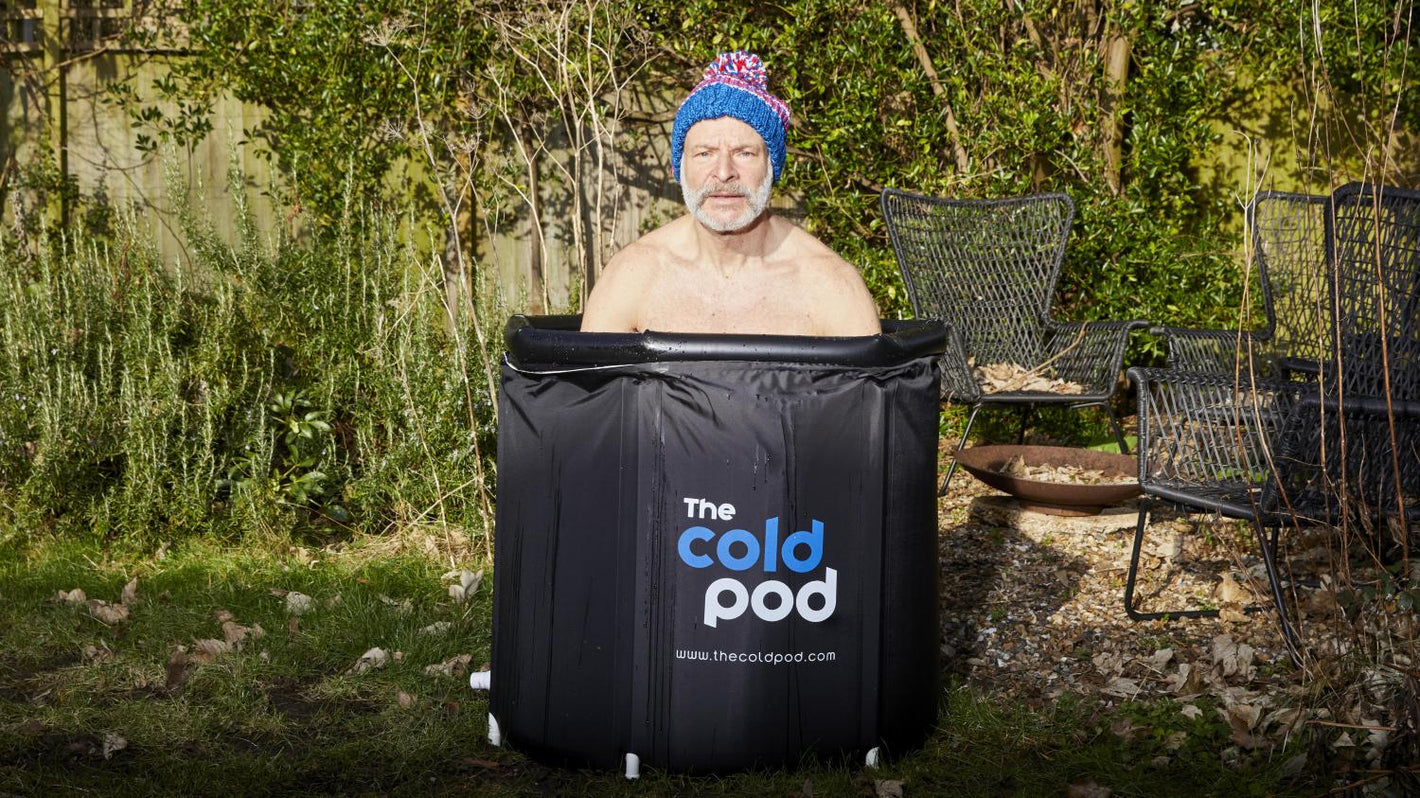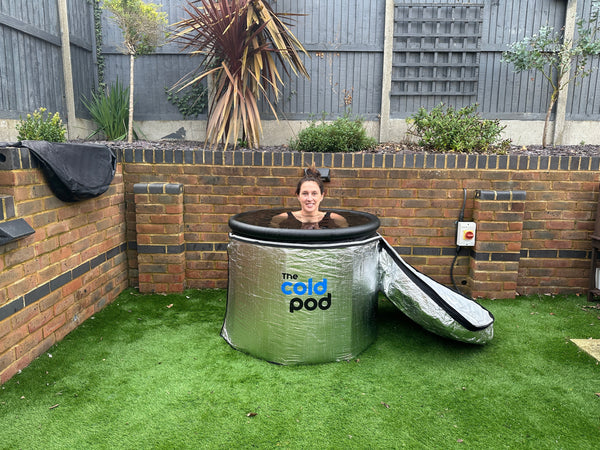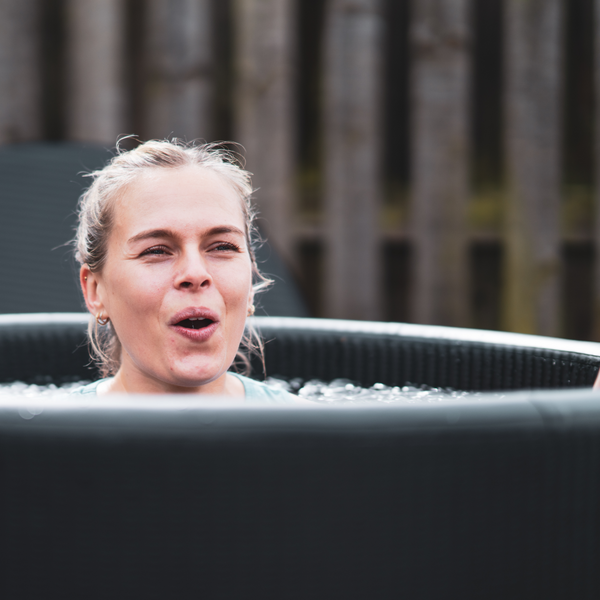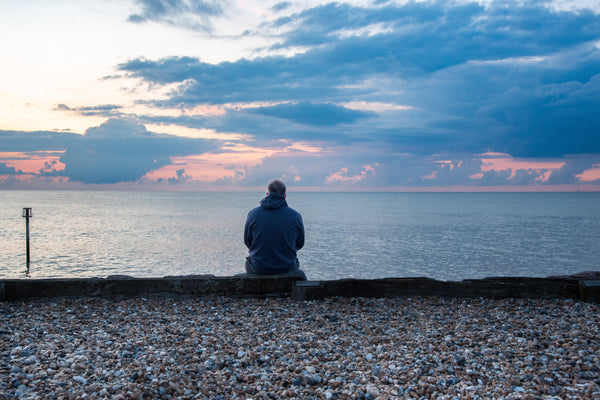The A-listers pay thousands for their trendy contraptions, but Phil Hilton has a more limited budget. Could a Cold Pod in his garden match up?
Phil Hilton
Wednesday February 08 2023, 5.00pm, The Times
The world’s most famous and influential people are relieving the pressures of life in the media lens by lying down in very cold water. Often they post this mindful escape from public scrutiny on Instagram, their faces composed and peaceful as the ice blocks float around them. Deliberate cold exposure is the new hot yoga.
It’s almost easier to list the celebrities who don’t use cold immersion . . . fans of the wellness practice include Nicole Scherzinger, Conor McGregor, Harry Styles, Oprah Winfrey, Gwyneth Paltrow, Chris Hemsworth, Lizzo and Kylie Jenner.
The chic constructions that the A-list use do not come cheap: these are beautifully designed, cutting-edge and often costing more than £10,000 each. We, the regular working masses, may not have the same pressures, but surely also deserve access to what is, by all accounts, a powerful treatment?
On behalf of the man and woman in the street, I have volunteered to try a more affordable version of the ice bath. An overthinker with a lifetime loathing of cold water, I am seeking starry discomfort at superstore prices. I, too, want to feel the horrible pain of lying in ice water like a member of the red-carpet set.
The Yorkshire-based Brass Monkey makes an automated, app-controlled bath with patented technology at a starting price of more than £11,000; its users include Joe Wicks and Russell Brand. The Ice Bath Company’s Oval model (a wood barrel-based design) retails for £1,350-£7,665 plus VAT. Tubmarine’s sleek stainless steel construction will set you back £13,450; Plunge cold baths (smooth and white) come in at about £4,200.
The expense is because these systems give you precise control of the cold water at any time with minimal effort. As you acclimatise to the cold you can drop the temperature to the exact level that works for you. Each company has found a different approach and design, and doubtless if I had the means, I would place one of these next to my screening room, just down the hall from the skate half-pipe and the weights set-up.
Instead, I have a suburban back garden with a threadbare winter lawn, two rusted bikes, a spidery, unused barbecue and a miniature football net. Here I plan to find perspective and become more present with the aid of a Cold Pod, on sale for £95.
It arrives via DPD in an amazingly small cardboard container. I’m assuming the rest of the bath will come later, but once I tear into the box, I realise that it’s small because it’s a folding black vinyl bath. Immediately I tense up: I’m a flat-pack disaster. We have Ikea cupboards with upside-down shelves and tiny, lost Allen keys still lurking in their misshapen depths.
However, after I lay the various pieces down and begin to slip plastic poles into the special sleeves and inflate parts that have those little paddling pool valves, it takes only minutes to put together — it’s basically just like those portable cots my kids had when they were little.
I carry the structure to the appointed spot in the garden (next to the slightly broken, folding tennis table), fix up the hose and begin to fill. The weight of the tap water gives the structure more than enough stability and, since we are not in California, its temperature is easily chilly enough for a beginner. Anything below 15C is cold, and the tap water is probably about 7-10C.
In the lead-up to this experiment I’d listened to influential podcasters like Dr Andrew Huberman and Dr Rangan Chatterjee and read extensively about the benefits. The science backing up the claims for cold water immersion is impressive: there is the 250 per cent increase in dopamine that lasts for hours; the enhanced recovery from physical exercise; the preservation of cognitive function; the improvement in your fat metabolism; and the boost to your immune system. It’s not without risk, however — for those with pre-existing conditions such as cardiovascular disease or high blood pressure, the impact of cold water on core temperature can be dangerous.
As I stand in my back garden in my trunks, I just don’t feel like someone with an entourage and an Oscar nod. I don’t care if the immersion will enable me to fly like an eagle and sing like Beyoncé, I don’t want to do it.
Anyone who has negotiated with a team of people about the setting of the office air conditioning knows that the difference between 21 and 19 degrees can result in rage, relationship breakdown and performative coat-wearing. We lead very temperature-regulated lives; we are sensitive people with digital thermostats. We pop out for milk wearing North Face jackets designed for Everest. We just don’t do cold.
Finally, I force myself to step in and crouch down. Full disclosure: my first time I immediately leap out again. It is horrible, counter to every instinct, like sucking lemons while running your fingers down a blackboard. But I rally and try again. As I bend my legs and the water reaches the special middle zone, my breath starts to become wild and I am convinced that my heart is on the verge of a full-scale crisis. Yes, I am in the moment, but the moment is deeply unpleasant.
I remember the face of otherworldly calm that is a hallmark of the many, many social media posts featuring cold immersion. My face is that of a toddler who has been told he can never eat ice cream again.
Finally, I take control, calm my breathing and force myself to sit crouched in the giant saucepan of freezing water. I count a minute (possibly 50 seconds) before jumping up and swearing over and over again at the broken tennis table and the barbecue.
My next move is a terrible mistake — I skip across my garden and upstairs into a hot shower. Do not do this, readers — the feeling is of being bitten by thousands of enraged tiny ants.
Danyl Bosomworth, the founder of Brass Monkey luxury ice baths, explains later that I should have jumped about and heated myself using my own power and not my combi boiler. He began life, like me, as someone who loathed cold water. It was the Dutch cold guru “Iceman” Wim Hof, a global advocate for chilling yourself, who made him aware of the technique.
“I started the Wim Hof Method, but I was terrified of the cold so I just did the controlled breathing. I dabbled with cold showers and I lasted 15 seconds. I couldn’t believe how painful it was. But I persisted.”
Having studied the Wim Hof approach, Bosomworth found himself in lockdown dealing with anxiety when a business he was involved with ended. He decided to convert a chest freezer into an ice bath, something that the adventurer Bear Grylls has also done with an appliance he bought on eBay (the chief Scout is also a fan of early-morning dips in a cow trough in his back garden).
Although Bosomworth’s arrangement soon began to leak, he found that the cold soothed his mind. “I felt still. Really still. I couldn’t believe it did that.” After considerable research and development, the freezer became the Brass Monkey luxury item. He is a clearly genuine fan of the cold and fully understands that his £11,000 product is not for everyone.
The bargain Cold Pod is completely adequate to the task. It may not have had the chic finishing and complex automation of its more glitzy rivals, but it works. A 2kg bag of ice costs about £1, and in high summer I could have emptied three into the apparatus and made myself as uncomfortable as any Hollywood leading man.
As soon as I recover from the shower catastrophe, I do indeed feel the sense of calm wellbeing all the devotees talk about, and it stays with me all afternoon. It is a little like the single-glass-of-red-and-good-book feeling.
The thought of doing it again fills me with dread, but I also know, without a shadow of a doubt, that I will be climbing back into my freezing tub within days. Whatever it takes, I will force myself back into chilled water. I’ll master the facial expression in the fullness of time.







